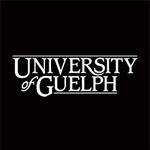What kind of postcard is this?
This postcard was produced by Birn Brothers, Ltd. under the name “B.B. London” (Petrulis, 2017), and printed in Germany. The front of the postcard features the landscape of Loch Earn framed by the Robertson tartan and white flowers. These could either be lily of the valley, which are associated with Christmas (“Lily of the Valley,” 2013), or white heather, which are rare in Scotland and believed to be good luck (“Scottish Heather,” n.d.). In the bottom right corner is a shield with the Lion Rampant from the Royal Arms of Scotland (McWilliam, 1999) followed by “Robertson”. This is a seasonal postcard, with the front reading “Hearty Christmas Greetings” and a traditional red and green colour scheme. The back of the postcard indicates that it is part of a series; however, I was unable to determine exactly what series.
While this postcard contains a variety of elements (landscape, Scottish clan paraphernalia, … etc.), it is primarily a Christmas postcard. The first Christmas card was created in 1843 when Sir Henry Cole approached an artist friend, J.C. Horsley, to request his help in designing and printing a Christmas-themed postcard so he could save time handwriting letters to everyone in his social circle (Hanc, 2015). Cole’s idea was criticized at first and took several decades to become popular, but eventually the Christmas card was used throughout Great Britain and the United States (Hanc, 2015). The first modern-day Christmas card is not believed to have been created until 1915, when the Hall Brothers postcard printing company (now known as Hallmark) developed a new “book” format for their cards in order to provide more writing space than the traditional postcard (Hanc, 2015).


